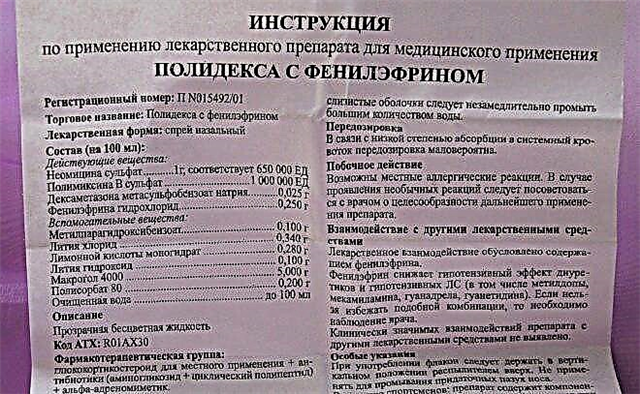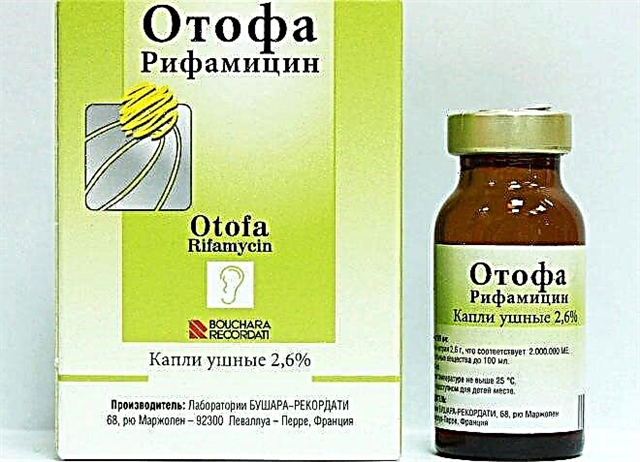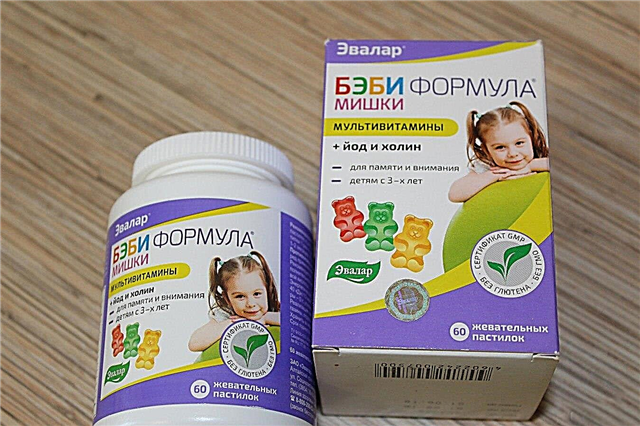
During pregnancy, a woman may face various diseases, because her immune system becomes weaker, which is an additional provoking factor for the development of infections. In the presence of chronic diseases, their exacerbation is possible, which poses a danger to both the health of the pregnant woman and the development of the baby.
At the same time, the list of drugs that are allowed to be used while carrying a child is very limited. And if before conception a woman was saved by some proven and effective remedy, this does not mean at all that it can be used during pregnancy. These drugs include Polydex. This drug receives a lot of positive reviews and is considered effective, but it is unacceptable to use it while waiting for a baby without consulting a doctor.

Features of the drug
"Polydexa" is produced in the form of ear drops... It is a yellowish liquid sold by prescription in glass bottles sealed with an aluminum lid.
For accurate dosing, a dosing pipette packed separately is placed in the box. The composition of the solution includes three active components at once - neomycin, polymyxin B and dexamethasone.
These are two substances with antibacterial action, supplemented with glucocorticoid hormone. Thanks to this combination, the drug can:
- reduce inflammation and allergy symptoms;
- suppress the activity of staphylococci, haemophilus influenzae, Klebsiella, Escherichia and many other microorganisms.

When is it used?
Due to its antimicrobial, anti-edematous and anti-inflammatory effect, Polydex is in demand for otitis externa. The drug is also used in patients with eczema of the ear canal. Under the action of the ingredients of the solution, the inflammatory process subsides, the infection is eliminated, the swelling subsides, and the pain passes faster.


Is it allowed during pregnancy?
The child's waiting period is included in the list of conditions in which treatment with Polydexa is prohibited... The drug should not be used either in the early stages, when the most important organs of the baby are laid, or in 2-3 trimesters, despite the predominantly local action.
Its active components are capable of causing various negative effects. In particular, the neomycin present in the drops has an ototoxic effect, that is, such an antibiotic can provoke the development of deafness and impair hearing. And although this effect often occurs with prolonged use, it is undesirable to take risks during pregnancy.

Studies of the safety of "Polydexa" for the fetus have not been conducted, therefore, it is impossible to assert that even a short-term use of drops will not harm the baby in the tummy.
That is why doctors prefer to completely abandon the use of this remedy, prescribing more studied medicines for the expectant mother. A particularly strict prohibition is provided for 1 trimester, because at this time even safe medicines should be used to a minimum.
Besides, Polydexa has many contraindications, and in addition to the period of bearing a child... These include viral and fungal infection of the ears, violation of the integrity of the tympanic membrane, intolerance to the components of the solution. With such problems, the medication is unacceptable to use not only during pregnancy, but also at other times, for example, when planning conception.

With a runny nose
In addition to ear drops, in pharmacies you can find "Polydex" in a blue box... This is a nasal spray in which another active ingredient, phenylephrine, is added to the active substances present in the ear drops. This is indicated on the packaging of the drug. The product is a clear solution, which is sold in 15 ml polyethylene bottles with a spray tip.
Such a solution is prescribed to be sprayed into the nose with a cold, adenoiditis, sinusitis, rhinopharyngitis and other lesions of the ENT organs of a bacterial nature. Under the influence of antibacterial components, the agent helps to get rid of microbes by acting on a fairly large list of microorganisms.

Dexamethasone present in the drug relieves inflammation, and phenylephrine narrows the vessels of the mucous membrane, eliminating puffiness.
In the paper annotation for the spray, as well as in the instructions for use of ear drops, it is noted that during pregnancy, such a medication is not prescribed... Despite its high efficiency, there are many contraindications for this type of "Polydexa", so it is absolutely impossible for women in a position to use it on their own initiative.

What to replace?
Many drugs, which are traditionally referred to as analogues of "Polydexa" for their therapeutic effect, are also contraindicated to use during pregnancy. There are such restrictions for the famous drops "Sofradex", "Otinum" and "Isofra". These drugs are not well understood (there are no studies with reliable data), therefore, the risk of harmful effects of their components on the fetus cannot be excluded, so they should not be dripped into the ear. If the expectant mother has otitis media, then after the examination, the doctor can prescribe the following drugs.
- Otipax. These drops reduce inflammation and pain through the combination of lidocaine and phenazone. The drug is prescribed even for newborns, since it acts only locally. Pregnant women can drip this solution with inflammation of the outer or middle ear, following the scheme prescribed by a specialist. Treatment is carried out only after examination by an ENT doctor, since Otipax is contraindicated in case of mechanical damage to the tympanic membrane.

- "Otofa"... These ear drops are produced by the same pharmaceutical company that produces Polydex. However, it is a one-component topical antibiotic that kills most of the bacteria that cause otitis media. Its active ingredient is rifamycin. The drug can be used even with a perforated eardrum, as well as after surgical treatment in the middle ear. During pregnancy, it is used in cases where such treatment is indispensable (according to strict indications).

- "Anauran"... The composition of such drops is similar to "Polydexa", as they contain polymyxin B and neomycin, but instead of dexamethasone, this drug contains lidocaine, which gives it a pronounced anesthetic effect. In the instructions for "Anauran" it is noted that such a drug is recommended to be used for external and otitis media only in case of urgent need and under the supervision of a specialist. In the 1st trimester, when the risk of exposure to the fetus is very high, they try to refuse treatment with this remedy.

As for the analogues of "Polydexa with phenylephrine", one of the solutions allowed during pregnancy, which drip or spray into the nasal passages, can become a substitute for this remedy. For example, a mother-to-be can use saline solutions with a hypertonic concentration. Most often, the basis of such medicines is sea water, as in the means Aqualor Forte and Aqua Maris Strong.

A drug with a high percentage of salt has an osmotic effect on damaged cells, as a result of which water leaves them, which leads to a decrease in edema.
Such medicines are effective for different types of rhinitis, quickly deal with congestion, cleanse the nasal passages and strengthen local immunity. They can be used during pregnancy at any time.
Another popular remedy that can be used both for a cold and for otitis media, for which it can be called an analogue of both types of "Polydexa", is Miramistin. This is a solution with antiseptic properties, which affects not only pneumococci, Escherichia coli, chlamydia, staphylococcus and other bacteria, but also some fungi and viruses.

It is allowed to be used while waiting for a child and in the early stages, and in the second or third trimesters. With rhinitis, "Miramistin" is injected into the nose up to 8 times a day, with otitis media, it is dripped into the inflamed ear canal up to 4 times a day. The drug receives a lot of good reviews, does not provoke negative consequences, can also be used for conjunctivitis, sore throat, skin lesions, stomatitis and many other diseases.
For more information on the preparation Polydex in the form of a spray, see below.



